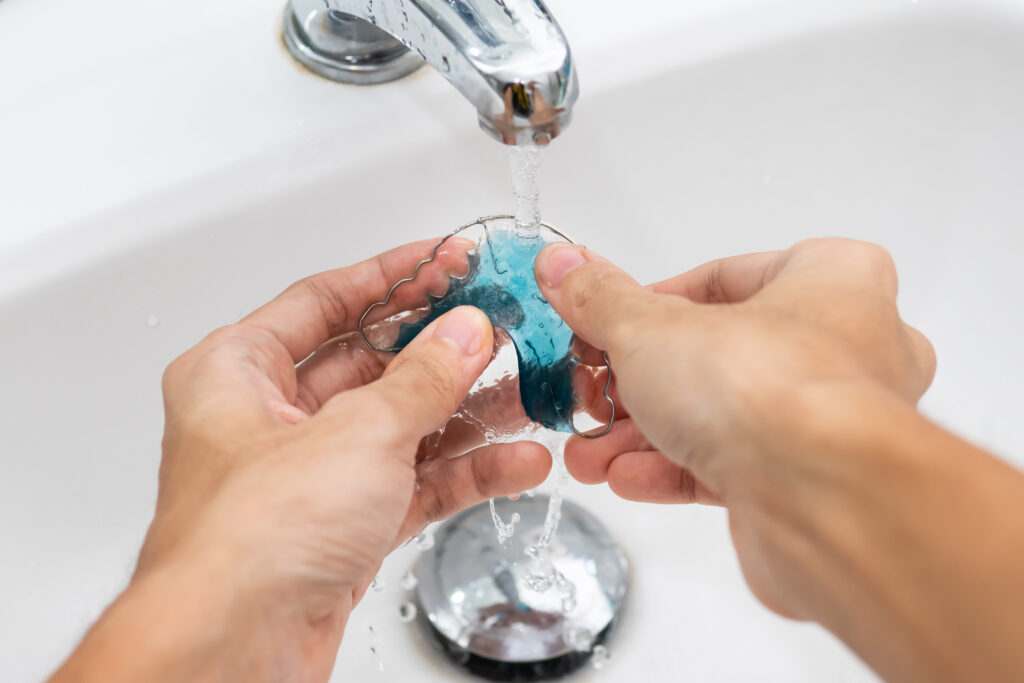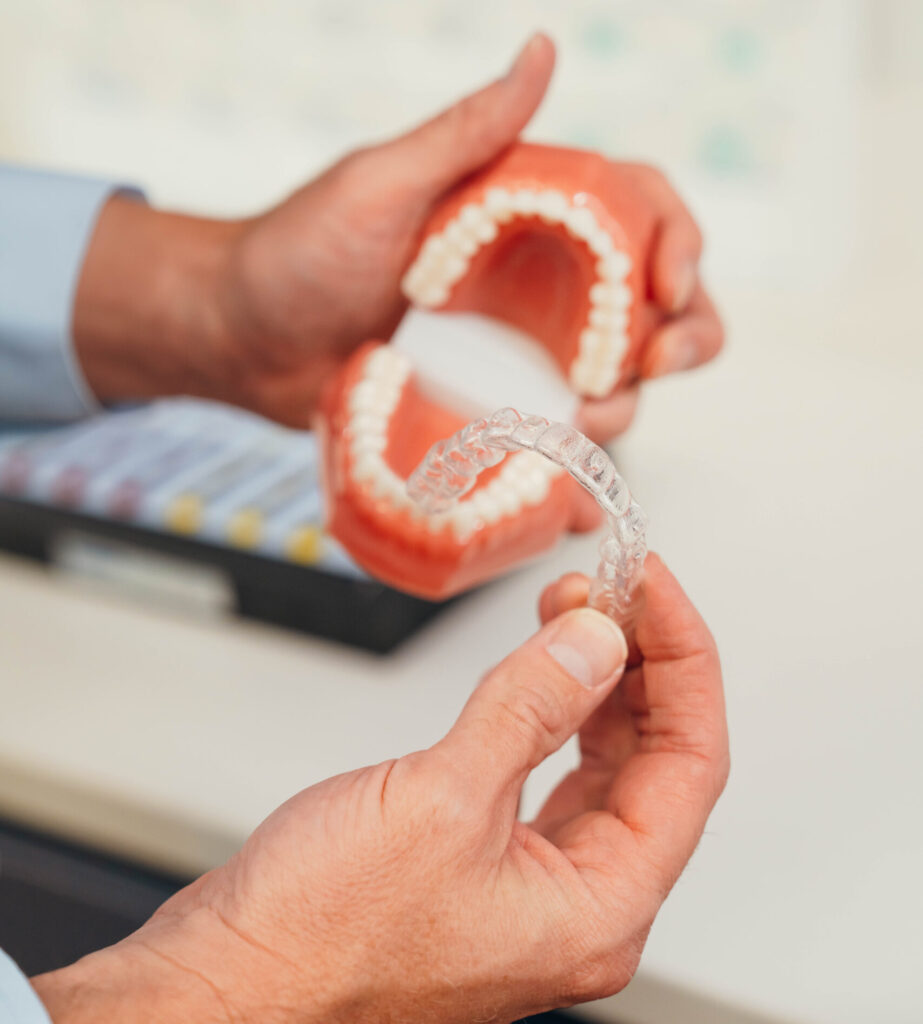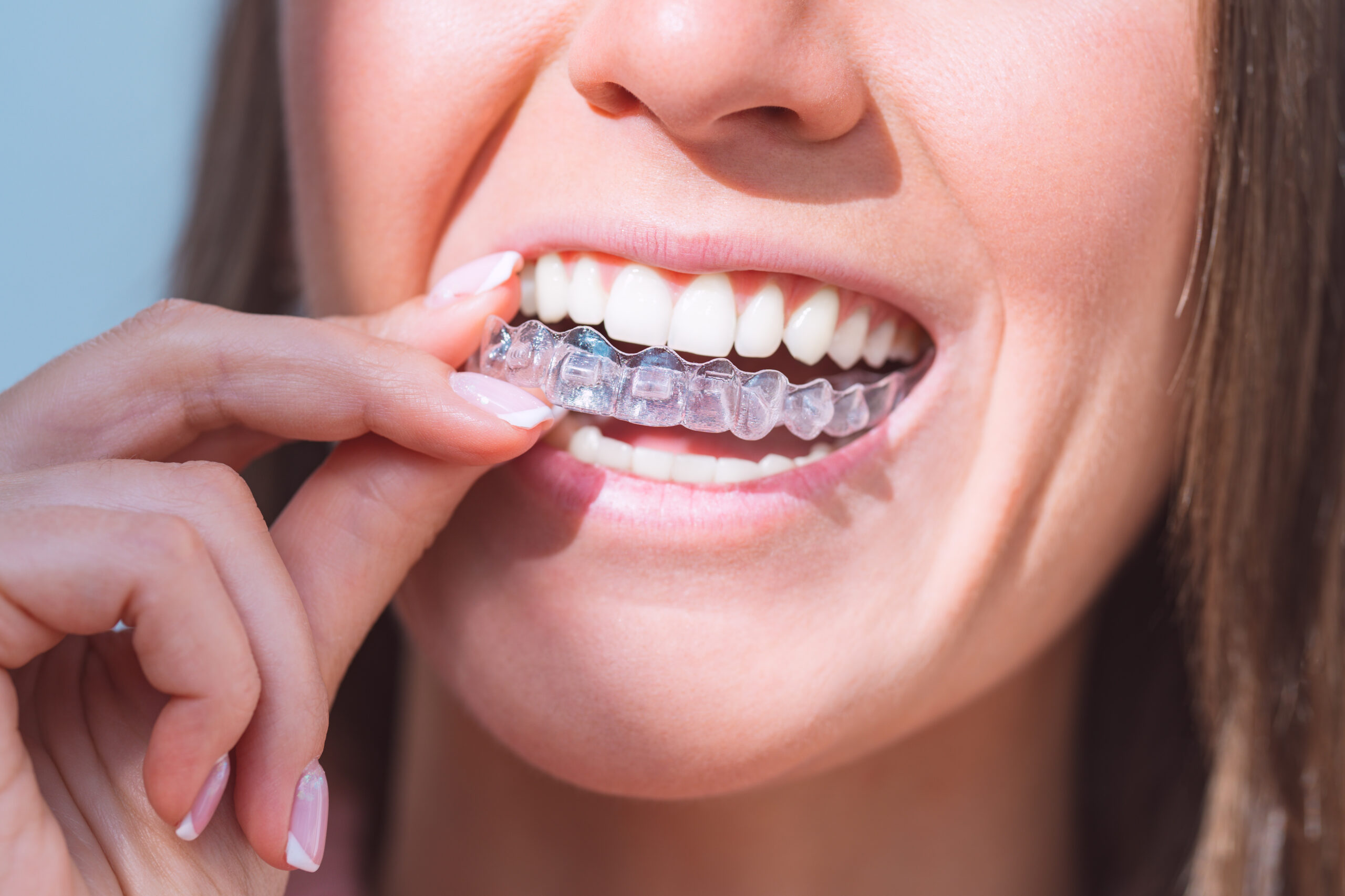Keeping your retainers clean is one of the most important parts of protecting your smile. Whether you wear a clear retainer, a metal retainer, removable retainers, or a permanent retainer, good retainer care keeps bacteria away, prevents odor, and reduces the risk of tooth decay. If you have ever wondered how to clean retainers safely and effectively, this guide breaks it down in a simple, practical way.
Retainer Care At A Glance
Daily Basics
- Rinse after every use
- Brush gently with a soft bristled toothbrush
- Avoid toothpaste on a clear plastic retainer
- Keep your retainer case clean
Weekly Deep Clean
- Soak your retainer 2 to 3 times a week
- Use a retainer cleaner designed for dental devices
- Let your retainer fully dry before storing
Things To Avoid
- Bleach
- Abrasive toothpaste
- Strong mouthwash with alcohol
- Hot or boiling water
- Household cleaners
- Vinegar mixture
Why Retainer Cleaning Matters
Your retainer sits against your teeth and gums for hours each day. Without proper cleaning, a clear retainer or metal retainer can collect plaque, bacteria, food particles, and calcium buildup. A dirty retainer often leads to odor, cloudy discoloration, and irritation that can increase your risk of tooth decay. Clean retainers last longer and keep your smile protected.
1. Daily Upkeep Makes the Biggest Difference
Daily upkeep is the foundation of a clean retainer. After removing your retainer, give it a quick rinse with lukewarm water to prevent debris from sticking. A gentle rinse removes saliva, loose particles, and early plaque. This small step helps keep both plastic and metal retainers fresh, especially if you wear your retainer overnight. Regular care prevents buildup from hardening and makes your weekly deep clean easier.
2. Brush Gently With a Soft Bristled Toothbrush
A soft bristled toothbrush is one of the safest tools for everyday retainer cleaning. Brush slowly using small circular motions to remove plaque and keep the retainer surface smooth. Skip toothpaste for clear plastic retainers because the tiny abrasives can create scratches that trap bacteria and make the retainer look cloudy. Mild dish soap or a retainer-safe cleaning gel works well without harming the material.
3. Use a Weekly Deep Clean With the Right Solution
A weekly deep clean helps remove buildup that brushing alone cannot reach. There are three common soaking options, and each one has its strengths and limitations.
Retainer Cleaning Tablets
Pro: Easy to use and great for odor control
Con: Some formulas can be too strong for daily use
Orthodontic Cleaning Solutions
Pro: Designed specifically for clear and metal retainers
Con: Slightly more expensive than basic cleaners
Gentle Denture Cleaners
Pro: Effective for lifting stains and hardened deposits
Con: Not all formulas are safe for a clear plastic retainer
Before reaching for household alternatives, keep in mind that strong DIY mixtures can damage the surface or weaken the material. Always choose a cleaning solution made for dental appliances.

4. Avoid Harsh Chemicals and Unsafe Cleaning Methods
When trying to clean retainers more thoroughly, it can be tempting to use stronger products, but many household cleaners cause long-term damage. Bleach, abrasive toothpaste, vinegar mixtures, and alcohol-based mouthwash can weaken plastic, corrode metal components, or irritate your gums. A clean retainer should feel smooth and fresh, not scratched or gritty. If your retainer needs more help than brushing can give, a dental-safe cleaning solution is the safer choice.
5. Store Your Retainer Properly to Prevent Damage
Imagine taking your retainer out at lunch, wrapping it in a napkin, and setting it beside your plate. You get up to leave, the table gets cleared, and your retainer goes with the trash. Another common scenario is leaving a clear retainer on the counter only to find that a curious pet chewed on it. Some people place their retainer in a warm car or near a heater and discover it has warped out of shape. These moments happen more often than you think.
Proper storage protects your retainer from heat, bacteria, and accidental damage. Always place your clean retainer in a ventilated case, and clean the case weekly with mild soap and warm water. A good habit here saves time, money, and frustration.
6. Good Oral Hygiene Supports Cleaner Retainers
Your retainer stays cleaner when your teeth stay cleaner. Brushing twice a day, flossing regularly, and keeping plaque under control reduces what transfers onto your retainer. This is especially important for permanent retainers, where plaque collects around the bonded wire. Floss threaders or a water flosser make it easier to clean these tighter spaces.
7. Permanent Retainer Care Requires Extra Attention
Permanent retainers need more focused cleaning because they sit behind your teeth at all times. Brush along the gumline with a soft bristled toothbrush, floss under the wire daily, and use a water flosser to reach areas standard floss cannot. Even with great home care, professional cleanings every six months are important for removing tartar that tends to collect around the wire.

FAQ About Retainer Cleaning
What is the best way to clean retainers?
Rinse them daily, brush gently with a soft bristled toothbrush, and deep clean them weekly with a dentist-approved retainer cleaner or cleaning solution.
What are the signs of a dirty retainer?
Cloudiness, strong odor, white mineral spots, a sticky texture, or bad breath shortly after wearing the retainer are all common signs that you need a deeper cleaning routine.
How often should I clean retainers?
Removable retainers should be cleaned daily and deep cleaned weekly. Permanent retainers require daily brushing and flossing around the wire.
Is hydrogen peroxide ok for retainers?
Hydrogen peroxide can be used occasionally for a deeper clean, but it should not replace a regular cleaner. Overuse can weaken plastic and irritate your gums.
When to Replace a Retainer
If your clean retainer no longer fits correctly, feels uncomfortable, or has cracks, warping, or heavy discoloration, it may be time for a replacement. Wearing a damaged retainer can allow your teeth to shift out of alignment.
Schedule a Consult With Prince Orthodontics
If your retainer needs professional attention or you are due for a replacement, we are here to help. Schedule a consultation with Prince Orthodontics for expert guidance, personalized retainer care, and support from a doctor who knows your smile.

